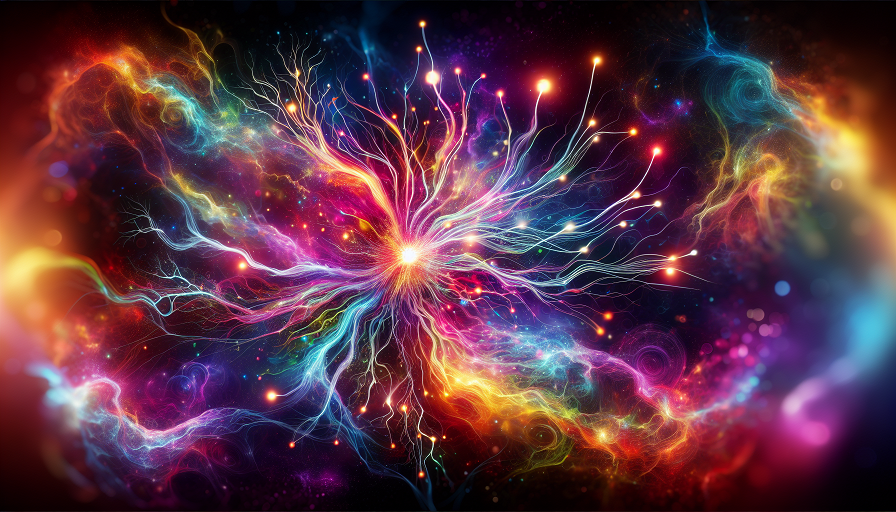
Have you ever yawned just because someone else did? Or flinched when you saw someone stub their toe? That odd, reflexive mimicry isn’t just coincidence—it’s your brain’s internal social network lighting up. Hidden deep within our neural circuitry lies a mysterious system of cells known as mirror neurons, and they might just be one of the keys to understanding how we connect with others.
Though first discovered by accident, these neurons have since become one of the most intriguing—and controversial—findings in neuroscience. They provide insight into empathy, learning, culture, and even how we interpret the actions of strangers. From toddlers mimicking parents to athletes learning from watching replays, mirror neurons are working behind the scenes, quietly shaping our social intelligence.
But what exactly are they? And how do they influence not just our behavior, but our sense of self and connection to others?
Contents
The Accidental Discovery That Changed Everything
In the early 1990s, a group of Italian neuroscientists led by Giacomo Rizzolatti was studying monkey brains to understand motor functions. While observing a macaque monkey, researchers noticed something surprising: a neuron fired not only when the monkey performed an action, but also when it watched someone else perform that same action.
For example, a specific neuron would light up when the monkey grabbed a peanut—and that same neuron fired when the monkey simply watched a human grab a peanut. This was the first hint of what would later be called a “mirror neuron.”
The implications were immediate and enormous. Here were brain cells that didn’t just respond to personal experience—they responded to observed experience, blurring the line between self and other in a fascinating way.
The Human Connection
Soon, researchers began finding evidence that humans had similar mirror neuron systems. Using tools like functional MRI (fMRI), they observed brain activity in people as they watched others performing tasks. Specific areas of the brain—especially in the premotor cortex and inferior parietal lobe—lit up not only during action but during observation of action.
This suggested that humans may be biologically wired to simulate others’ experiences internally. In short: we don’t just watch, we feel.
Why Mirror Neurons Matter: Empathy, Learning, and Connection
Mirror neurons may be one of the neurological foundations of empathy—the ability to “put yourself in someone else’s shoes.” When you see a friend cry, your mirror system may activate similar emotional states in your own brain. It’s not just sympathy. You’re literally experiencing a piece of their emotion.
Imitation as a Learning Tool
Children learn by watching. Whether it’s tying shoes, using utensils, or speaking, much of what we acquire early in life comes from mimicking adults. Mirror neurons may be the neural machinery that makes this possible. They help us learn by internal simulation before we ever attempt the behavior ourselves.
And it doesn’t stop in childhood. Adults use observation to learn complex motor skills—like playing an instrument, dancing, or mastering a golf swing. Watching someone perform an action activates the same regions of the brain as doing the action, priming the nervous system for imitation and practice.
The Roots of Culture and Communication
Some scientists believe mirror neurons are what make culture transmissible. Rituals, languages, gestures—all depend on our ability to observe, internalize, and repeat behaviors. Without mirror neurons, human society might be far less cohesive, and far less capable of preserving knowledge and tradition.
The Mirror System and Mental Health
Intriguingly, disruptions in the mirror neuron system may play a role in various neurological and psychological conditions.
Autism Spectrum Disorder (ASD)
Some theories suggest that a malfunctioning mirror neuron system could contribute to the social and communicative challenges seen in autism. If the brain struggles to simulate others’ actions or emotions, it may explain difficulties with empathy or interpreting social cues. While this theory is still debated, it continues to drive important research into neurodiversity and brain development.
Other research looks at how empathy—or a lack of it—relates to mirror neurons. Could impaired mirroring lead to reduced compassion or moral disengagement? While it’s not the whole story, the mirror system likely plays a role in how we emotionally relate to others, and understanding it could open doors to better mental health interventions.
Trauma and PTSD
Mirror neurons might also help explain how trauma can be vicariously experienced. For therapists, social workers, or even empathetic friends, witnessing the suffering of others can lead to emotional burnout. Some mental health professionals believe that overactive mirroring, without appropriate emotional boundaries, may contribute to conditions like compassion fatigue or secondary PTSD.
Everyday Mirroring: More Than Monkey See, Monkey Do
Even outside of academia, you can observe mirror neurons at work in daily life.
- Facial mimicry: When someone smiles at you, you smile back. This automatic response fosters bonding and signals mutual trust.
- Postural matching: In conversations, people often subconsciously mirror each other’s body language, indicating rapport and understanding.
- Contagious laughter: Just hearing someone laugh can make you start laughing—even if you don’t know why. That’s the mirror system kicking in.
In these subtle ways, mirror neurons create an invisible social glue. They help us attune to the emotions and intentions of others, often without conscious effort.
Mirror Neurons in Media and Technology
Ever cried during a movie or felt your heart race during a suspenseful scene? Mirror neurons help explain why we emotionally engage with fictional characters. Your brain simulates their feelings as if they were real. That’s why stories have such power—they activate our neural empathy circuits, making us feel alongside the narrative.
Social media and video content, too, trigger mirror systems. Watching a cooking tutorial or fitness influencer can actually prepare your brain to replicate those actions. This is one reason why content that visually demonstrates a process can be so effective at motivating behavior.
Enhancing the Mirror System: Is It Possible?
While mirror neurons are built-in, their sensitivity and responsiveness can vary. Just like any part of the brain, they can be supported—and potentially enhanced—through practice and lifestyle choices.
- Mindfulness and empathy training: Practices like loving-kindness meditation have been shown to boost emotional awareness and may sharpen mirroring responses.
- Engaging socially: Conversations, team sports, theater, and even games that involve mimicry can exercise these neural pathways.
- Observational learning: Watching skilled individuals perform tasks and imagining yourself doing them can reinforce your brain’s capacity for internal simulation.
Some also explore nutritional and supplemental support for cognitive function. While not a magic fix, certain nootropics and brain health supplements are marketed to improve focus, emotional regulation, or neuroplasticity. These may, indirectly, influence how well the mirror neuron system performs. As always, choosing quality, research-backed products is essential.
Controversies and Cautions
As fascinating as mirror neurons are, the field is still young. Some researchers caution against attributing too much to them. After all, brain function is rarely localized to a single area or type of cell. Human empathy and social behavior involve a complex dance between numerous brain regions and systems.
Still, the concept of mirror neurons has already reshaped how we think about learning, emotion, and interaction. Like most revolutionary scientific discoveries, it sparks both enthusiasm and debate—both of which are signs of a field alive with possibility.
A Window Into Each Other’s Minds
Mirror neurons remind us that we are not as isolated as we sometimes feel. Our brains are wired not just for self-preservation, but for resonance with others. We reflect and are reflected. We influence and are influenced. In every smile, flinch, or shared laugh, a subtle dance unfolds between minds.
Understanding this hidden engine of social connection doesn’t just illuminate the mechanics of empathy—it challenges us to use that awareness for greater kindness, communication, and compassion. And in an age where attention is fragmented and interactions are filtered through screens, anything that reminds us of our shared humanity is a light worth following.

